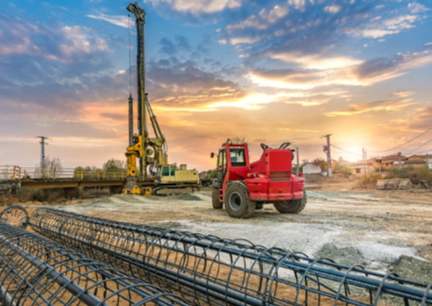Piling Contractors: The Experts Behind Strong, Lasting Foundations

Every great structure begins with a solid foundation — and at the heart of that foundation is the work of professional piling contractors. From towering commercial buildings to residential homes, bridges, and industrial facilities, piling contractors provide the essential groundwork that ensures structures stand tall, safe, and secure for decades.
In this article, we explore the world of piling contractors: what they do, the types of piling systems they install, their role in construction projects, benefits of hiring professionals, cost considerations, and how to choose the right contractor for your needs.
What Do Piling Contractors Do?
Piling contractors specialise in designing, supplying, and installing piles — deep foundation elements that transfer structural loads to deeper, stronger layers of soil or rock. Their work is critical in situations where surface soils are too weak or variable to support a structure.
Key responsibilities include:
- Site assessment to determine soil conditions and foundation requirements.
- Design collaboration with structural engineers to select the right piling system.
- Supply and installation of piles using specialised machinery.
- Load testing to ensure piles meet design requirements.
- Compliance documentation to satisfy regulatory and engineering standards.
Piling contractors work across a range of projects: residential, commercial, civil infrastructure, industrial facilities, and more.
When Is Piling Needed?
Piling is essential when:
✅ Surface soils are soft, loose, or prone to settlement.
✅ Loads are too heavy for shallow foundations.
✅ The site is on a slope or in a flood-prone area.
✅ Foundations must resist uplift, lateral forces, or seismic activity.
✅ Fast installation or minimal disruption is required.
By transferring loads to deeper, stable ground, piles provide the strength and reliability needed for long-lasting construction.
Types of Piling Systems Installed by Contractors
Professional piling contractors work with various pile types, each suited to specific ground conditions and project requirements. Common systems include:
1️⃣ Driven Piles
Steel, concrete, or timber piles driven into the ground using hydraulic hammers. Ideal for:
- Soft or loose soils
- High-capacity applications
- Coastal and marine projects
2️⃣ Bored (Drilled) Piles
Piles formed by drilling a hole and filling it with concrete and reinforcement. Advantages:
- Minimal vibration (suitable near existing buildings)
- Large-diameter options for heavy loads
3️⃣ Screw (Helical) Piles
Steel shafts with helical plates screwed into the ground. Benefits:
- Fast, low-disturbance installation
- Great for restricted-access or sensitive sites
- Immediate load capacity
4️⃣ Continuous Flight Auger (CFA) Piles
Installed by drilling with a continuous auger and injecting concrete as the auger is withdrawn. Features:
- No open hole (good for unstable ground)
- Low noise and vibration
5️⃣ Sheet Piles
Steel sheets driven into the ground to form retaining walls or cofferdams. Used for:
- Excavation support
- Waterfront structures
Your piling contractor will recommend the best system based on geotechnical conditions, load requirements, and site constraints.
The Piling Process
Here’s what a typical piling project involves:
🔹 1. Site Investigation
Contractors review geotechnical reports, assess soil conditions, and identify challenges such as groundwater, obstructions, or limited access.
🔹 2. Design & Engineering
Working with engineers, the contractor determines:
- Pile type
- Diameter and length
- Load capacity
- Installation method
🔹 3. Mobilisation
Specialised piling rigs and equipment are brought to site, and safety measures are put in place.
🔹 4. Installation
Piles are installed as per design, with constant monitoring of depth, torque, vibration, or hammer energy (depending on method).
🔹 5. Testing
Load tests, integrity tests, and documentation confirm that piles meet required standards.
Advantages of Hiring Professional Piling Contractors
Choosing skilled piling contractors offers several benefits:
✅ Technical Expertise
Specialists understand complex ground conditions, engineering requirements, and the right methods for your site.
✅ Quality Assurance
Professional contractors provide certified materials, tested installations, and compliance with Australian Standards or equivalent.
✅ Efficiency
With the right equipment and trained crews, projects are completed faster and with fewer delays.
✅ Safety
Piling involves heavy machinery, deep excavations, and potential hazards. Experts ensure work is done safely and responsibly.
✅ Custom Solutions
Every site is unique. Contractors tailor pile design and installation to suit your specific requirements.
Typical Applications of Piling
Piling contractors work across a wide range of construction sectors:
🏠 Residential
- New homes on soft or sloped sites
- Extensions and renovations requiring deep foundations
🏢 Commercial
- Office buildings
- Retail centres
- Multi-storey developments
🌉 Civil Infrastructure
- Bridges and overpasses
- Road and rail structures
- Retaining walls
⚡ Industrial
- Warehouses
- Factories
- Power plants
🌊 Marine & Waterfront
- Piers, jetties, seawalls
- Cofferdams for water-side construction
How Much Do Piling Services Cost?
Piling costs vary widely based on:
- Pile type and size
- Depth required
- Soil conditions
- Site access
- Project complexity
Here’s a rough guide (per pile or linear metre):
- Driven steel piles: $300–$1,200+
- Bored concrete piles: $500–$2,000+
- Screw piles: $150–$500+
- Sheet piles: $300–$1,000+
It’s important to obtain detailed quotes from contractors, covering:
✅ Design and engineering
✅ Materials
✅ Mobilisation
✅ Testing and certification
What to Look for in a Piling Contractor
When hiring a piling contractor, consider the following:
🌟 Experience
Look for companies with a strong track record in similar projects. Experience with local soil conditions is a plus.
🌟 Licensing & Accreditation
Ensure they’re licensed and accredited to carry out piling works and foundation engineering.
🌟 Equipment
Check that they have the right rigs and tools for your pile type and site conditions.
🌟 Engineering Support
Contractors should work with structural engineers and provide certified designs and reports.
🌟 Safety Record
Ask about their safety practices, insurance cover, and incident history.
🌟 Transparency
A reputable contractor provides clear quotes, timelines, and scope of work.
Environmental Considerations
Modern piling contractors prioritise sustainability by:
🌱 Reducing site disturbance
🌱 Managing spoil responsibly
🌱 Minimising noise and vibration
🌱 Using recyclable materials (e.g. steel piles)
If environmental impact is a concern, discuss eco-friendly piling options with your contractor.
Common Challenges — and How Pros Handle Them
🛑 Unexpected Ground Conditions
Experienced contractors adapt pile design or installation method when surprises are encountered underground.
🛑 Restricted Access
Compact rigs and innovative techniques allow piling in tight or difficult sites.
🛑 Water or Contaminated Soils
Special methods, such as CFA piles or casing systems, deal effectively with these conditions.
The Future of Piling
Piling contractors are embracing innovation:
🚀 Smart monitoring for torque, depth, and load
🚀 Low-carbon materials
🚀 Modular and prefabricated foundation systems
🚀 Automation and robotics in piling rigs
These advances mean faster, safer, and more sustainable foundations for tomorrow’s buildings.
Conclusion
Piling is a critical part of any construction project — and getting it right starts with choosing the right piling contractor. From expert design and precision installation to compliance with safety and environmental standards, professional contractors lay the groundwork for success.
Whether you’re planning a residential build, a commercial development, or major infrastructure, partnering with skilled piling specialists ensures your project starts on solid ground.



